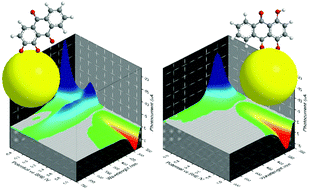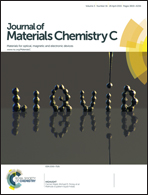TiO2–anthraquinone hybrids: from quantum-chemical design to functional materials
Abstract
A series of materials based on titanium dioxide nanoparticles and anthraquinone dyes have been modelled using the quantum mechanical minimalistic model. Based on the computational results some spectral and photoelectrochemical properties of these materials have been predicted. Experimental studies indicate that the quantum-chemical predictions are correct. New materials exhibit interesting switching properties and moderate photosensitization towards visible light. Furthermore, based on excited state properties of dye–semiconductor hybrids diverse photocatalytic properties, including the activation of molecular oxygen, can be predicted.


 Please wait while we load your content...
Please wait while we load your content...